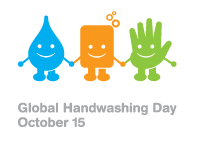 Today is National Petroleum Day, also known as Oil and Gas Industry Appreciation Day.
Today is National Petroleum Day, also known as Oil and Gas Industry Appreciation Day.
Crude oil was first pumped from the ground in China’s Sichuan Province 2,500 years ago. Its discovery in the U.S. is credited to Edwin L. Drake who, on August 27, 1859, struck oil 70 feet below the surface of Titusville, PA.
The word “petroleum” translates as “rock oil,” derived from the Greek word petra (rock) and oleum (oil). The combination of liquid crude oil and natural gas is called a fossil fuel because it has been created by the decomposition of organic matter over millions of years, formed in sedimentary rock under intense heat and pressure.
Petroleum is an integral part of modern life. Some of the world’s largest businesses extract and process it while others create products that use hydrocarbons or are petroleum-based: asphalt, plastics, fertilizers, car tires, candles, ammonia, CDs, crayons, perfumes, deodorant, heart valves, pharmaceuticals, synthetic fabrics and bubble gum, to name a few.
Saudi Arabia produces 8.1 million barrels of oil per day and has the largest amount of reserves at 267 billion barrels. The U.S. consumes 19.4 million barrels per day, more than any other country. It has the 11th largest reserve at 21 billion barrels—enough to last for up to eight years at current consumption levels.
The U.S. has 4 percent of the world’s population but uses 25 percent of the world’s oil. Approximately half of that is utilized by the transportation industry. U.S. drivers use almost twice as much oil as drivers in China and India combined.
Because fossil fuels have taken millions of years to form, they are a non-renewable resource. Eventually, we will run out. Petroleum use has had a negative impact on the environment as carbon is released into the atmosphere, increasing temperatures and accelerating global warming. Many products made with petroleum derivatives don’t biodegrade quickly, while fertilizer runoff can damage the water table.
The Deepwater Horizon oil spill in 2010, the largest in history, spilled 4.2 million barrels into the Gulf of Mexico. But spills account for only about 5 percent of the oil that enters the world’s oceans. According to the Coast Guard, sewage treatment plants discharge twice as much oil into U.S. waters each year as tanker spills.
On National Petroleum Day, let’s consider all the ways petroleum has enhanced our lives while coming to terms with the fact that it won’t last forever. The strides we make now toward finding alternatives will make a better world for our children, their children and their children’s children.
Happy National Petroleum Day!


![]()




 Leland, we wish you the best in your turd analysis. Perhaps
Leland, we wish you the best in your turd analysis. Perhaps  Today is National Petroleum Day, also known as Oil and Gas Industry Appreciation Day.
Today is National Petroleum Day, also known as Oil and Gas Industry Appreciation Day.